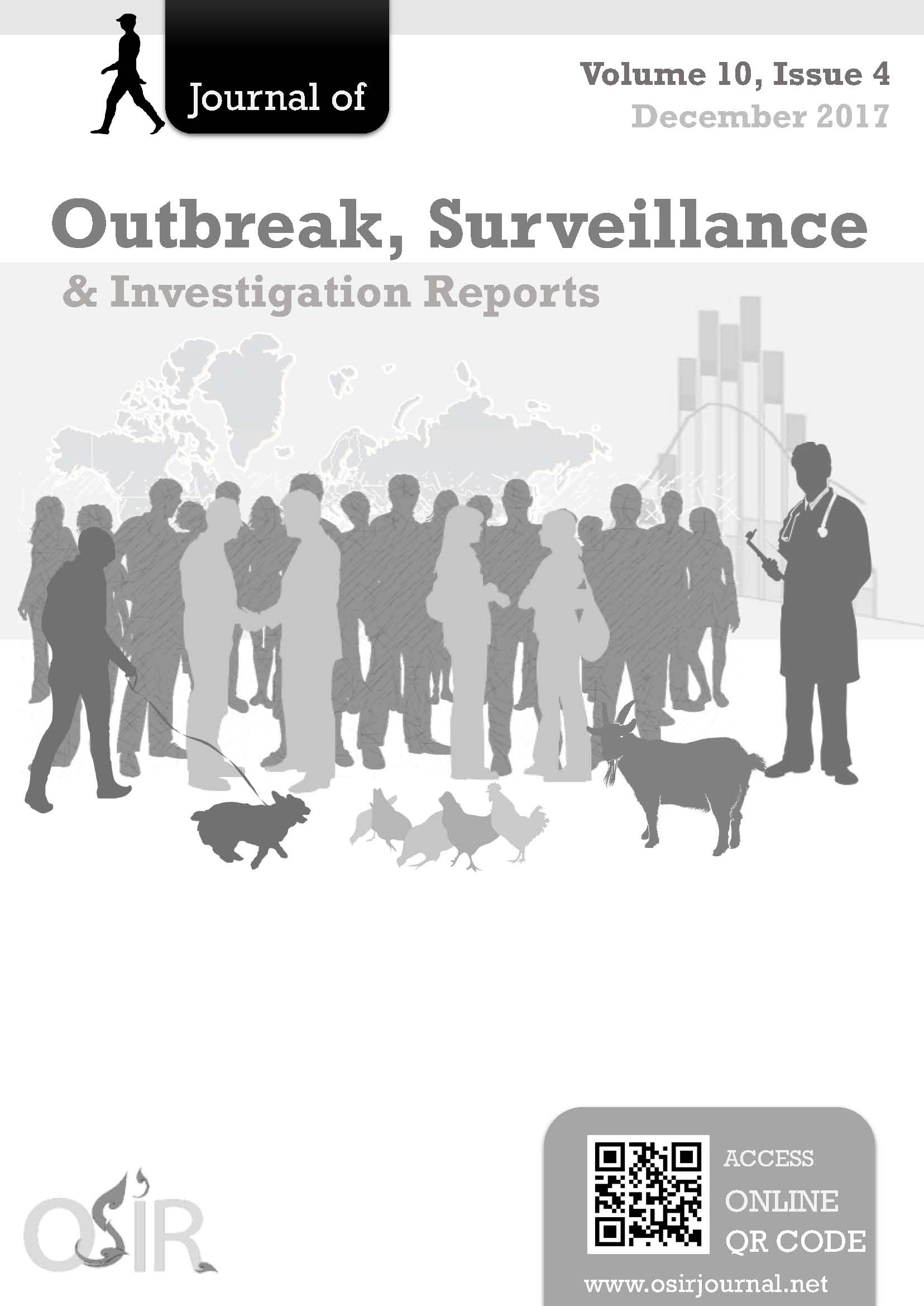Epidemiology of Multiple Casualty Incidents from Road Accidents in Thailand, 2006-2011
DOI:
https://doi.org/10.59096/osir.v10i4.263074Keywords:
Multiple casualty incidents, road accident, investigation, Haddon matrixAbstract
Investigations that focus on multiple casualty incidents (MCIs) can identify factors which can determine a very high burden of injury and death. Five MCI investigations were carried out in Thailand using surveillance data, physical investigation data from the scenes and vehicles, in-depth interviews with survivors and witnesses, and extraction of medical information from hospital records. Haddon’s matrix was utilized to structure results in three phases (pre-event, event and post-event) which were stratified into four agents (human, vehicle, physical and socio-economic environment). The five MCIs involved 113 people, nine pickup trucks, four sidecar motorcycles and one each of a car, bus, prime mover truck and prime mover truck with a flatbed semi-trailer. Ten (8.8%) people died and 81 (71.7%) people were injured. Many amenable risk factors were human-related (inexperience, falling sleep, dangerous driving, non-use of seat belts, riding in the cargo area or on the rear platform). Vehicle-related factors were also present (poor tire treads and lack of safety devices), and environmental factors were prominent (wet and slippery roads, poor signage and lighting). Other notable facts included delay in contacting emergency services, lack of cutting equipment and limited first aid support. Many modifiable risk factors were identified, highlighting the need to reform roads and vehicles, and educate passengers and drivers.
References
World Health Organization. Global status report on road safety: time for action. Geneva: WHO; 2009 [cited 2017 Aug 21]. <http://apps.who.int/iris/bitstream/10665/44122/1/9789241563840_eng.pdf>
Thailand. Statistical Forecasting Bureau. National Statistical Office. Reported traffic accidents by type of vehicle. Thai [cited 2017 Aug 23]. <https://tinyurl.com/ya3hflev>
Thailand. Transport and Traffic Policy Plan Office. Ministry of Transport. Report of road traffic accidents 2014. Bangkok: Transport and Traffic Policy Plan Office; 2015. Thai [cited 2017 Aug 23]. <http://www.otp.go.th/uploads/files/1471501633-dgyrs-3z11i.pdf>
Krug EG, Sharma GK, Lozano R. The global burden of injuries. American Journal of Public Health. 2000;90(4):523-26.
World Health Organization. Road traffic injury prevention training manual. Geneva: World Health Organization; 2006 [cited 2017 Aug 22]. <http://apps.who.int/iris/bitstream/10665/43271/1/9241546751_eng.pdf>
Holder Y, Peden M, Krug E, Lund J, Gururaj G, Kobusingye O. Injury surveillance guidelines. Geneva: World Health Organization; 2001 [cited 2017 Aug 22]. <http://www.who.int/violence_injury_prevention/media/en/136.pdf>
Thailand. Office of the Council State. Land Traffic Act, 1979. 1979 Mar 15. Thai [cited 2017 Aug 22]. <http://web.krisdika.go.th/data/law/law2/%A803/%A803-20-9999-update.pdf >
Waiyanate N. Road traffic injury investigation. Nonthaburi: Bureau of Epidemiology, Department of Disease Control, Ministry of Public Health; 2006. Thai [cited 2017 Aug 22]. <http://www.epid101.net/main/wp-content/uploads/2010/09/invest_traffic1.pdf>
Sleigh A. Outbreaks, epidemics and clusters. In: Webb P, Bain C, Pirozzo S, editors. Essential epidemiology: an introduction for students and health professionals. 1st ed. New York: Cambridge University Press; 2005: 249-75.
Robertson LS. Injury epidemiology: research and control strategies. 3rd ed. New York: Oxford University Press; 2007.
Calland V. Extrication of the seriously injured road crash victim. Emergency Medicine Journal. 2005;22(11):817-21. [cited 2017 Aug 22]. <http://emj.bmj.com/content/emermed/22/11/817.full.pdf>
Risser R. Behavior in traffic conflict situations. Accident Analysis and Prevention. 1985;17(2):179-97 [cited 2017 Aug 22]. <http://www.ictct.org/wp-content/uploads/Risser_1985.pdf>
Agran P, Winn D, Anderson C. Injuries to occupants in cargo areas of pickup trucks. Western Journal of Medicine. 1994;161(5): 479-82 [cited 2017 Aug 22]. <https://www.ncbi.nlm.nih.gov/pmc/articles/PMC1022675/pdf/westjmed00063-0037.pdf>
Anderson CL, Agran PF, Winn DG, Greenland S. Fatalities to occupants of cargo areas of pickup trucks. Accident Analysis and Prevention. 2000;32(4):533-40 [cited 2017 Aug 22]. <https://doi.org/10.1016/S0001-4575(99)00075-5>
Subramanian R. Passenger vehicle occupant fatality rates by type and size of vehicle. NHTSA's National Center for Statistics and Analysis; 2006 Jan.
Solah MS, Ariffin AH, Isa MHM, Wong SV. In-depth crash investigation on bus accidents in Malaysia. Journal of Society for Transportation and Traffic Studies. 2012;3(1): 22-31.
National Sleep Foundation. Facts and stats. 2014 [cited 2014 Aug 4]. <http://drowsydriving.org/about/facts-and-stats/>
Sagberg F. Road accidents caused by drivers falling asleep. Accident Analysis and Prevention. 1999;31(6):639-49 [cited 2014 Aug 4]. <https://doi.org/10.1016/S0001-4575(99)00023-8>
National Sleep Foundation. Facts about drowsy driving. 2007 [cited 2014 Aug 4]. <http://drowsydriving.org/wpcontent/uploads/2009/10/DDPW-Drowsy-Driving-Facts.pdf>
World Health Organization. Save lives - a road safety technical package. Geneva: World Health Organization; 2017.
Downloads
Published
How to Cite
Issue
Section
License
Copyright (c) 2023 Outbreak, Surveillance, Investigation & Response (OSIR) Journal

This work is licensed under a Creative Commons Attribution-NonCommercial-NoDerivatives 4.0 International License.









